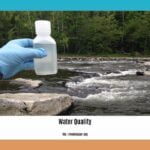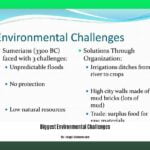Discover the ins and outs of tap water as we dive into the pros and cons, exploring its advantages and disadvantages. Delving into this essential resource, we will unravel the affordability and convenience of tap water, alongside its strict safety regulations ensuring its quality. However, we must also shed light on potential contamination risks and the ecological harm caused by the production and disposal of plastic water bottles. Join us on this exploration as we equip you with a comprehensive understanding of the pros and cons of tap water.
Key Takeaways:
- Tap water in the United States is considered to be safe, regulated, and monitored by the FDA.
- In rare instances, tap water may contain contaminants, but it can be filtered to improve its safety.
- Blind taste tests have shown that most people cannot differentiate between tap water and bottled water.
- Tap water is convenient, readily available, and significantly cheaper than bottled water.
- Choosing tap water over bottled water reduces the environmental impact of plastic waste and carbon emissions.
Advantages and Disadvantages of Tap Water: Exploring Safety, Taste, Cost, and Environmental Impact

Safety
Tap water in the United States is carefully regulated and monitored by the Food and Drug Administration (FDA). This means that it must meet certain safety standards to ensure it is safe for consumption. In fact, the CDC reports that drinking water in the United States is considered to be some of the safest in the world. However, it’s important to note that there may be rare instances where tap water can contain contaminants. To improve the safety of tap water, you can consider using carbon filters or a reverse-osmosis system to further purify it.
Taste
Many people believe that bottled water tastes better than tap water. However, blind taste tests have consistently shown that most individuals cannot actually tell the difference between the two. The taste of tap water may vary depending on factors such as the source and any additional minerals or additives present. Bottled water may come from springs or be pre-filtered, while tap water often contains minerals and additives to enhance taste. However, these differences are generally subtle and most people won’t be able to discern a significant taste difference.
Cost and Convenience
One of the major advantages of tap water is its convenience and low cost. Tap water is readily available in homes, restaurants, bars, and public drinking fountains. It can be easily obtained by filling reusable bottles, which makes it a convenient option when you’re on the go. On the other hand, purchasing bottled water can quickly become expensive. Choosing tap water over bottled water can result in substantial savings over time. So not only is tap water more convenient, but it’s also a cost-effective choice.
Environmental Impact
When we consider the environmental impact, tap water clearly takes the lead. The production, transportation, and disposal of plastic water bottles have a significant negative impact on the environment. Plastic bottles contribute to pollution and waste, and the energy required for their production and transportation releases carbon emissions into the atmosphere. On the other hand, tap water has a much smaller environmental footprint. By choosing tap water over bottled water, you can help reduce plastic waste and lower your carbon footprint.
In summary, tap water in the United States is generally safe, cost-effective, and convenient. While there may be occasional concerns about contaminants, using filtering systems can significantly improve its safety. It’s important to remember that taste preferences can vary, but most people cannot tell the difference between tap water and bottled water in blind taste tests. By choosing tap water over bottled water, you can not only save money, but also contribute to a more sustainable future by reducing plastic waste and carbon emissions.
References:
– Medical News Today. “Bottled water vs. tap water: Pros and cons.” Retrieved from medicalnewstoday.com
– Fit People. “Tap Water: Pros and Cons.” Retrieved from fitpeople.com
To explore the advantages and disadvantages of soundproofing, click here and discover how this technique can enhance your living or working space.
Looking for insights into the advantages and disadvantages of ultrasonic sensors? Get all the details by clicking here and stay one step ahead in the world of technology.
Disadvantage: Potential Contamination Risks

Water is a vital resource that we rely on for various purposes, from hydration to cooking and cleaning. When it comes to tap water, one of the key concerns is the potential for contamination risks. While tap water in the United States is generally regulated and considered safe, there are instances where contamination can occur. In this section, we will explore the potential risks associated with tap water and the importance of understanding these risks.
Identifying Potential Contaminants
Tap water can be exposed to various contaminants along its journey from the source to your faucet. These contaminants can come from natural sources, human activity, or the aging infrastructure of water delivery systems. Some common types of contamination include:
-
Microbial Contamination: This refers to the presence of microorganisms in the water, such as bacteria, viruses, and parasites. These contaminants can cause illnesses such as gastrointestinal infections, respiratory infections, and even lead to more severe health issues.
-
Chemical Contamination: Chemicals from industrial processes, agricultural activities, and household products can find their way into water sources. Examples of common chemicals include heavy metals, pesticides, pharmaceuticals, and disinfection byproducts. Exposure to these chemicals can have adverse health effects, especially with long-term exposure.
-
Toxic Substances: Sometimes, tap water may contain toxic substances like lead, arsenic, or radon, which can leach into the water from plumbing materials or natural deposits. These substances can have serious health consequences, particularly for vulnerable populations such as children and pregnant women.
Understanding the Risks
It’s important to note that the level of contamination and associated risks can vary depending on the location and the specific water source. While water treatment plants implement measures to reduce the presence of contaminants, occasional issues can occur that compromise water quality. Some factors that can contribute to contamination risks include:
-
Aging Infrastructure: Outdated water distribution systems can introduce contaminants from corroded pipes, allowing pollutants to enter the water supply.
-
Natural Disasters: Floods, hurricanes, and other natural disasters can damage water treatment facilities and contaminate water sources, leading to temporary spikes in contamination levels.
-
Human Error: Accidents or mistakes during water treatment processes can result in inadequate disinfection or the release of chemicals into the water.
-
Emerging Contaminants: With advancements in scientific understanding, new types of contaminants are being recognized, such as pharmaceutical residues and microplastics. The potential health impacts of these emerging contaminants are still being researched.
Minimizing Contamination Risks
To ensure the safety of tap water, both government regulators and individuals can take steps to minimize contamination risks. Government bodies establish and enforce regulations to maintain water quality standards, conduct regular testing, and address any identified issues promptly. As individuals, we can also play a role by taking the following precautions:
-
Use Water Filters: Installing a water filtration system at home can help remove certain contaminants and provide an additional layer of protection. Different filters are designed to target specific types of pollutants, so it’s essential to choose one that suits your needs and water quality.
-
Regular Maintenance: Regularly inspect and maintain your plumbing infrastructure to prevent potential contamination from lead or other materials. It’s especially important in older homes where pipes may be more susceptible to corrosion.
-
Stay Informed: Stay updated on your local water quality reports provided by water suppliers or government agencies. If there are any advisories or concerns, follow the recommended precautions or seek alternative water sources until the issue is resolved.
-
Conservation Efforts: Supporting efforts to conserve water can help reduce the strain on water sources, ensuring a sustainable supply. By using water responsibly and minimizing pollution in our daily lives, we contribute to safeguarding our water resources for future generations.
Key Takeaways:
- Tap water can be susceptible to contamination from different sources, potentially compromising its safety for consumption.
- Types of contamination include microbial contaminants, chemicals, and toxic substances, which can pose health risks.
- Factors such as aging infrastructure, natural disasters, human error, and emerging contaminants contribute to contamination risks.
- Governments regulate water quality standards and conduct testing to minimize contamination risks, but individuals can also take steps to safeguard their water.
- Using water filters, maintaining plumbing infrastructure, staying informed about water quality reports, and practicing water conservation can minimize contamination risks.
Sources:
– World Health Organization
– United States Environmental Protection Agency
Disadvantage: Ecological Harm Caused by Plastic Water Bottles
Plastic water bottles have gained widespread popularity due to their convenience and portability. However, it is important to consider the significant disadvantages they present in terms of ecological harm. In this section, we explore the negative impact of plastic water bottles on the environment, wildlife, and human health.
Environmental Pollution and Waste
Plastic water bottles contribute to environmental pollution at an alarming rate. The production of these bottles relies on fossil fuels, leading to greenhouse gas emissions that contribute to climate change[^2^]. Additionally, the majority of plastic water bottles are made from polyethylene terephthalate (PET), which requires large amounts of energy and resources to manufacture[^2^].
One of the most concerning aspects of plastic water bottles is their inability to biodegrade. Instead, they break down into smaller fragments known as microplastics. These microplastics release toxic chemicals into the environment, posing a threat to ecosystems and wildlife[^2^]. These harmful chemicals can find their way into rivers, lakes, and oceans, impacting marine life and contaminating our water sources[^2^].
Harm to Wildlife and Ecosystems
The negative impact of plastic water bottles extends to wildlife and ecosystems. These bottles often end up in natural habitats, leading to injuries and disruptions within ecosystems. Marine animals, birds, and other wildlife can confuse plastic bottles with food and mistake them for prey[^2^]. Ingesting or becoming entangled in plastic waste can cause severe injuries, and in some cases, even death.
Furthermore, the accumulation of plastic waste poses a significant threat to biodiversity. Plastic pollution can alter habitats, disrupt ecosystems, and reduce the overall resilience of ecosystems to external pressures[^2^]. This harm to wildlife and ecosystems highlights the urgent need to address the use and disposal of plastic water bottles.
Health Risks from Microplastics
The presence of microplastics in the environment has raised concerns about potential health risks. Microplastics have been found in tap water in various locations, exposing humans to these tiny particles through drinking water and other sources[^2^]. The long-term effects of microplastic ingestion on human health are still being studied, but evidence suggests that it may have adverse impacts on the human body[^2^].
Additionally, plastic bottles may contain harmful substances from the bottle itself, which can leach into the water[^2^]. These substances can pose health risks when consumed over time. By reducing the use of plastic water bottles, we can minimize our exposure to these potential health hazards.
Key Takeaways:
- Plastic water bottles cause significant ecological harm and contribute to environmental pollution and waste.
- Microplastics released from plastic bottles pose a threat to ecosystems, wildlife, and human health.
- Plastic bottles are not biodegradable and break down into microplastics, releasing toxic chemicals into the environment.
- Wildlife can be negatively impacted by plastic water bottles, leading to injuries and disruptions to ecosystems.
- Microplastics have been found in tap water, raising concerns about potential health risks.
- The production of plastic water bottles relies on fossil fuels, contributing to greenhouse gas emissions.
Sources:
– The Guardian: “Environmental impact of bottled water ‘up to 3,500 times greater …”
– TRVST: “Plastic Water Bottles – How Bad Are They for the Environment?”
Advantage: Stringent Safety Regulations and Enhanced Quality
Tap water, despite its availability and affordability, is often questioned for its safety and quality. However, stringent safety regulations and enhanced quality measures ensure that tap water meets the highest standards for consumption. Let’s explore the advantages of tap water in terms of stringent safety regulations and enhanced quality.
Stringent Safety Regulations Ensure Clean Drinking Water
To guarantee the safety of tap water, regulatory bodies at local, state, and national levels impose strict guidelines on water treatment and distribution systems. These regulations aim to eliminate contaminants and ensure that the water supplied to homes and businesses is safe for consumption. The United States, for example, has robust regulations enforced by the Environmental Protection Agency (EPA) under the Safe Drinking Water Act.
– Quality Control Measures: Stringent safety regulations require regular testing and monitoring of tap water. Water treatment facilities conduct extensive analyses to detect any potential contaminants, ensuring that the water delivered to your tap meets strict quality standards.
– Consistent Testing: The water supplied through the tap undergoes continuous testing for bacteria, viruses, heavy metals, and other harmful substances. These routine tests help maintain the water’s quality and make adjustments promptly if any issues arise.
– Certifications and Compliance: Water treatment facilities must adhere to strict guidelines, certifications, and compliance measures. Independent organizations, such as the NSF International, assess and certify the quality of tap water treatment systems to ensure their effectiveness and safety.
Enhanced Quality Control Measures for Tap Water
Stringent safety regulations also prioritize the enhancement of tap water quality, providing assurance to consumers. Let’s explore the measures taken to enhance the quality of tap water.
– Water Treatment Processes: Tap water undergoes comprehensive treatment processes, such as coagulation, sedimentation, filtration, and disinfection. These processes effectively remove impurities and potential contaminants, ensuring that the water meets regulatory standards before reaching your home.
– Filtration Technologies: Water treatment facilities utilize advanced filtration technologies, including activated carbon filters, reverse osmosis systems, and ultraviolet (UV) disinfection. These technologies effectively remove pollutants, chemicals, and microorganisms, further enhancing the quality of tap water.
– Continuous Improvement: Water treatment facilities strive for continuous improvement of their operations, incorporating technological advancements and innovative solutions. This commitment to improvement ensures that tap water quality remains at its best, meeting or exceeding regulated standards.
Key Takeaways:
- Tap water is subject to stringent safety regulations enforced by regulatory bodies like the EPA.
- Continuous testing and monitoring ensure the quality of tap water, with regular checks for contaminants and impurities.
- Independent certifications and compliance measures provide further assurance of tap water quality.
- Water treatment processes and advanced filtration technologies effectively remove pollutants and microorganisms from tap water.
- Constant improvement and adoption of innovative solutions ensure tap water quality remains high.
Sources:
– American Water Works Association (AWWA)
– Environmental Protection Agency (EPA)
–
FAQ
Q1: Is tap water safe to drink?
A1: Tap water in the United States is generally considered safe to drink. It is regulated and monitored by the Food and Drug Administration (FDA), and in most cases, it is just as safe as bottled water. However, it is important to note that in rare instances, tap water may contain contaminants. To improve the safety of tap water, individuals can consider filtering it with carbon filters or using a reverse-osmosis system.
Q2: How does the taste of tap water compare to bottled water?
A2: Blind taste tests have consistently shown that most people cannot differentiate between tap water and bottled water. The taste of tap water may vary depending on factors such as the source and any additional minerals or additives present. Bottled water may come from springs or be pre-filtered, while tap water often contains additional minerals and additives. However, these differences are generally subtle, and most individuals will not be able to discern a significant taste difference.
Q3: What are the advantages of drinking tap water?
A3: Tap water has several advantages. One of the major advantages is its affordability and convenience. It is readily available in homes, restaurants, bars, and public drinking fountains. It can be easily filled into reusable bottles, making it a convenient option while on the go. Compared to the cost of purchasing bottled water, tap water is significantly cheaper. Choosing tap water over bottled water can result in substantial savings over time. Additionally, tap water has a smaller environmental footprint as it does not require the use of plastic bottles or excess energy for transportation.
Q4: Are there any disadvantages to drinking tap water?
A4: While tap water has many advantages, it does have some potential drawbacks. One of the main concerns is the potential presence of contaminants in tap water. Although tap water is regulated and monitored, there is a small risk of contamination. However, individuals can take steps to improve the safety of tap water, such as using carbon filters or reverse-osmosis systems. Additionally, the taste of tap water may not be preferred by some individuals, as it can vary depending on the source and any additional minerals or additives present.
Q5: What is the environmental impact of tap water?
A5: Tap water has a significantly smaller environmental impact compared to bottled water. The production, transportation, and disposal of plastic water bottles contribute to pollution, waste, and carbon emissions. In contrast, tap water does not require the use of plastic bottles or excess energy for transportation. By choosing tap water over bottled water, individuals can help reduce the environmental impact associated with the production and disposal of plastic bottles.
- Unveiling Bernhard Caesar Einstein’s Scientific Achievements: A Legacy in Engineering - July 15, 2025
- Uncover who is Jerry McSorley: CEO, Family Man, Business Success Story - July 15, 2025
- Discover Bernhard Caesar Einstein’s Scientific Contributions: Unveiling a Legacy Beyond Einstein - July 15, 2025















